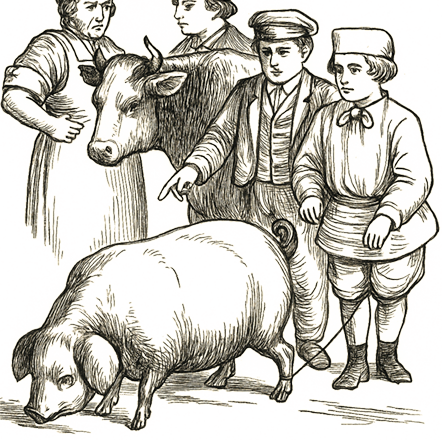To Market, to Market
To market, to market, to buy a fat pig,
Home again, home again, jiggety, jig.
To market, to market, to buy a fat hog,
Home again, home again, jiggety-jog.

Origins
The rhyme is much older than many other well-known nursery pieces. A version appears in Thomas Tusser’s Five Hundred Points of Good Husbandry (1573), a book of farming advice written in verse. Later chapbook collections from the 17th and 18th centuries carried forms closer to the one familiar today.
The structure — a trip to market and back — would have been instantly recognizable to households in Tudor and Stuart England, where weekly markets were the backbone of local trade.
 Meaning
Meaning
The rhyme captures the jostling motion of a cart or horse ride to and from market. The playful refrain “jiggety-jig” or “jiggety-jog” mirrors the bouncing rhythm of travel.
At its heart, the rhyme is not fanciful but practical. A “fat pig” or “hog” meant food for the family, and buying one was a significant household event. As with many traditional rhymes, the serious matter of provisioning was softened into a sing-song pattern for children.
Cultural Legacy
Though less well-known today than rhymes like “This Little Piggy” or “Jack and Jill,” “To Market, to Market” has endured in oral tradition and printed collections for centuries. Its simplicity, rhythm, and vivid imagery give it staying power, preserving a glimpse of everyday life in early modern England.